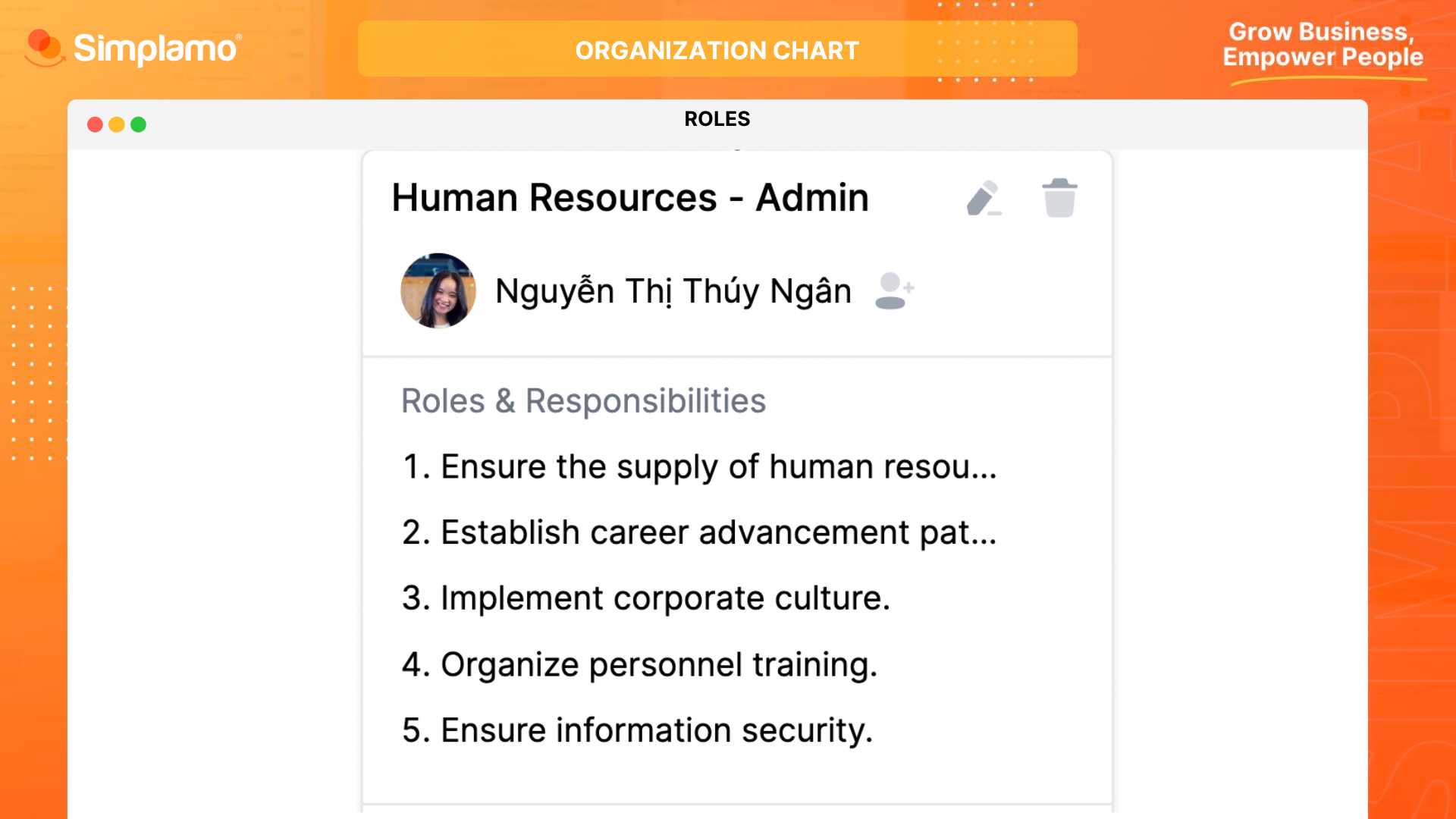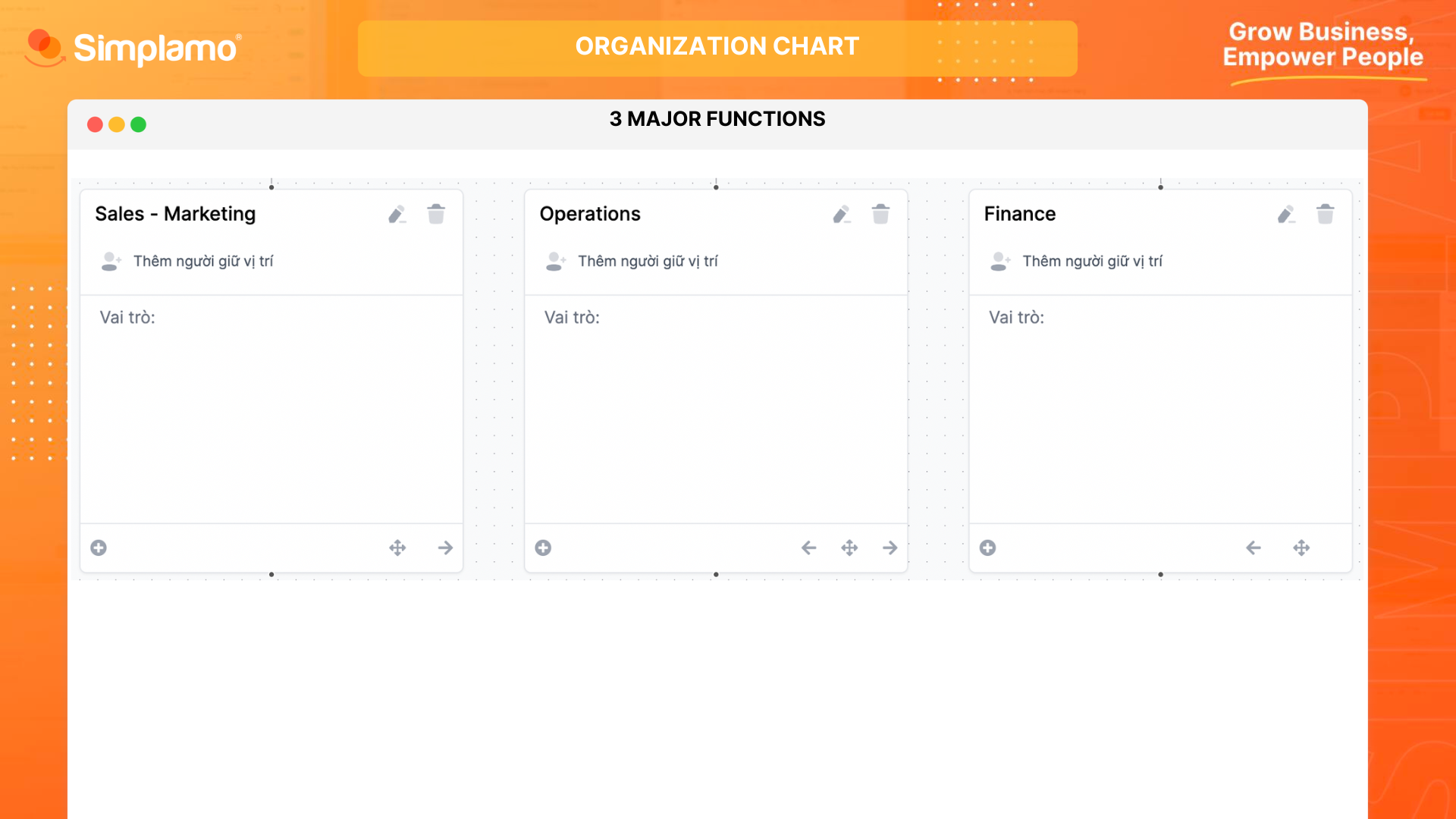Setup Organization Chart
I. Popular Theories
Some of the most popular organizational chart models that you may encounter are as follows:
- Matrix Model: Constructed based on a multidimensional authority system and support, the information in this model will be operated both vertically and horizontally.
- Functional Structure: Each management function will be undertaken by a department and have a Leader. Therefore, it requires personnel to have a solid grasp of professional skills and proficient in the business they manage.
- Flat Organizational Model: In this model, every positions often do not have titles. Therefore, employees in the company are equal and operate according to a self-management model.
- Geographical Organizational Model: A company with multiple operating branches will be suitable for this model. Businesses following this model will need to continuously report to the headquarters.
- Hierarchical Organization Model : As a traditional model, work will be communicated from the highest department level to middle management and then to employees.
Each model has its own advantages and disadvantages.
For Simplamo, we apply model 2 "Functional organizational structure", but with some additional points to emphasize high responsibility.
II. Simplamo’s Organization Chart
1. The differences
First - The Organization Chart on Simplamo does not show all the "names" or "positions"/”titles” in an organization, instead it shows the necessary *"functions" or “seats”.*
The intention is to show how different job functions can be scaled or scaled down. That way, as your company grows, the Organization Chart doesn’t need to (if your business does not grow too fast and/or add/change business models).
But if you illustrated 200 "titles", you will need a huge document to show all 200 names.
Second - For each seat in the company, it clearly show 5 or so bullet points clarify the major roles of that job (business needs).
Third - Each major function will have a responsible person's name accompanying it.

Fourth - We focus on 3 main functions that any business needs "SALES-MARKETING" - "OPERATIONS" and "FINANCE".
You can also add other functions if necessary for the business.

Fifth, we separate 2 positions:
- "Vision Organizer": Similar to the name of "Founder” or “Chairman" commonly seen in businesses. They are the ones who guide and draw the path for the entire business to reach long-term target.
- "Implementer": Similar to the position of “CEO/COO”, the person who manages all the main functions to implement ideas.

Along with the development of the business, the adjustment of structure, roles, and responsibilities will also be changed and supplemented accordingly. In rapidly growing companies, this Chart may be changed every 90 days.
5 Values
- Simple but clear: Clearly define roles and responsibilities of everyone in the organization and who holds the key.
- Eliminates multiple and often confusing reporting lines between "managers" and "employees".
- Everyone understands who is doing what, who is responsible for what, who reports to whom, and collaborates with whom to complete their work.
- Establish automatic ownership and responsibility for setting objective.
- Identify all of available seats in the organization
III. 4 Steps to Set up
Step 1: Identify Main Function
Identify the main functional departments (not job titles) that the company needs to have for effective operation in the next 6 to 12 months.
Note:
Temporary let go of the current structure (position names, individuals holding each position, and past management experience).
Step 2: Write 5 roles
For each function, ask the question "What purpose does it serve for the company's business needs?"
Note:
Each role should be concise, start with a "Verb" and have a responsibility element attached.
- Example: "Ensure 99.99% effectiveness of product features".
In case you list more than 5 roles, try to select the most important ones - ideally 4 to a maximum of 6 roles.
Step 3: Identify Responsible personnel
Based on the roles of each seat, apply 3 following criteria to determine whether the personnel are suitable for that position or not.
- Get it
- Want to do it
- Capacity to do it
Usually, all 3 criteria need to be met, but if the company has time and resources for training, only the first 2 criteria are necessary. This part will be explained further in Bài viết - Nhận diện nhân sự.
Note:
If there is no personnel assigned to a particular position, the direct manager for that position will temporarily take on the role, and note it in Simplamo as [Need to hire] to determine the recruitment needs.
Each different main function is only responsible by one person, but one person can take on multiple functions.
Step 4: Break down to the lowest level
Repeat the above 3 steps until it is not possible to further divide functional departments.
From Level 2 of the Organization Chart, if multiple people perform the same function, it can be represented in a single box.
So you have completed your Business Structure with the Organization Chart tool on Simplamo.
When the organization chart is complete, it will provide a stronger foundation for the "Owner" of the objectives in the next step, which we will explore later in the "IMPLEMENTATION PLANNING".